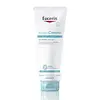What's inside
What's inside
 Key Ingredients
Key Ingredients

 Benefits
Benefits

 Concerns
Concerns

 Ingredients Side-by-side
Ingredients Side-by-side

Water
Skin ConditioningHexyldecanol
EmollientHexyldecyl Laurate
EmollientUrea
BufferingCoco-Caprylate/Caprate
EmollientPolyglyceryl-3 Polyricinoleate
EmulsifyingPrunus Amygdalus Dulcis Oil
Skin ConditioningGlycerin
HumectantMagnesium Sulfate
Cera Alba
EmollientCaprylic/Capric Triglyceride
MaskingLecithin
EmollientAscorbyl Palmitate
AntioxidantPolyglyceryl-3 Diisostearate
EmulsifyingLactic Acid
BufferingCitric Acid
BufferingPhenoxyethanol
PreservativeSodium Benzoate
MaskingWater, Hexyldecanol, Hexyldecyl Laurate, Urea, Coco-Caprylate/Caprate, Polyglyceryl-3 Polyricinoleate, Prunus Amygdalus Dulcis Oil, Glycerin, Magnesium Sulfate, Cera Alba, Caprylic/Capric Triglyceride, Lecithin, Ascorbyl Palmitate, Polyglyceryl-3 Diisostearate, Lactic Acid, Citric Acid, Phenoxyethanol, Sodium Benzoate
Water
Skin ConditioningGlycerin
HumectantButyrospermum Parkii Butter
Skin ConditioningOctyldodecanol
EmollientCaprylic/Capric Triglyceride
MaskingVitis Vinifera Seed Oil
EmollientDistarch Phosphate
AbsorbentGlyceryl Stearate Se
EmulsifyingCetearyl Alcohol
EmollientHydroxypropyl Starch Phosphate
Oenothera Biennis Oil
EmollientGlycyrrhiza Inflata Root Extract
Skin ConditioningCeramide NP
Skin ConditioningPhytosphingosine
Skin ConditioningSodium PCA
HumectantGlycine
BufferingDecylene Glycol
Skin ConditioningTocopherol
AntioxidantCitric Acid
BufferingSodium Citrate
BufferingHelianthus Annuus Seed Oil
EmollientBehenyl Alcohol
EmollientPolyglyceryl-3 Methylglucose Distearate
EmulsifyingEthylhexylglycerin
Skin ConditioningHydroxyacetophenone
AntioxidantTrisodium Ethylenediamine Disuccinate
Sodium Cetearyl Sulfate
CleansingXanthan Gum
EmulsifyingAscorbyl Palmitate
AntioxidantOleic Acid
EmollientPhenoxyethanol
PreservativeWater, Glycerin, Butyrospermum Parkii Butter, Octyldodecanol, Caprylic/Capric Triglyceride, Vitis Vinifera Seed Oil, Distarch Phosphate, Glyceryl Stearate Se, Cetearyl Alcohol, Hydroxypropyl Starch Phosphate, Oenothera Biennis Oil, Glycyrrhiza Inflata Root Extract, Ceramide NP, Phytosphingosine, Sodium PCA, Glycine, Decylene Glycol, Tocopherol, Citric Acid, Sodium Citrate, Helianthus Annuus Seed Oil, Behenyl Alcohol, Polyglyceryl-3 Methylglucose Distearate, Ethylhexylglycerin, Hydroxyacetophenone, Trisodium Ethylenediamine Disuccinate, Sodium Cetearyl Sulfate, Xanthan Gum, Ascorbyl Palmitate, Oleic Acid, Phenoxyethanol
 Reviews
Reviews

Ingredients Explained
These ingredients are found in both products.
Ingredients higher up in an ingredient list are typically present in a larger amount.
Ascorbyl Palmitate is created by combining pure Vitamin C and palmitic acid. It is an antioxidant and helps reduce hyperpigmentation.
This ingredient is a more stable version of Vitamin C, meaning it does not disintegrate as quickly when exposed to sunlight. However, studies show it does not penetrate skin as well as pure Vitamin C.
Ascorbyl Palmitate is oil soluble.
Read more about other types of Vitamin C:
Learn more about Ascorbyl PalmitateThis ingredient is an emollient, solvent, and texture enhancer. It is considered a skin-softener by helping the skin prevent moisture loss.
It helps thicken a product's formula and makes it easier to spread by dissolving clumping compounds.
Caprylic Triglyceride is made by combining glycerin with coconut oil, forming a clear liquid.
While there is an assumption Caprylic Triglyceride can clog pores due to it being derived from coconut oil, there is no research supporting this.
Learn more about Caprylic/Capric TriglycerideCitric Acid is an alpha hydroxy acid (AHA) naturally found in citrus fruits like oranges, lemons, and limes.
Like other AHAs, citric acid can exfoliate skin by breaking down the bonds that hold dead skin cells together. This helps reveal smoother and brighter skin underneath.
However, this exfoliating effect only happens at high concentrations (20%) which can be hard to find in cosmetic products.
Due to this, citric acid is usually included in small amounts as a pH adjuster. This helps keep products slightly more acidic and compatible with skin's natural pH.
In skincare formulas, citric acid can:
While it can provide some skin benefits, research shows lactic acid and glycolic acid are generally more effective and less irritating exfoliants.
Most citric acid used in skincare today is made by fermenting sugars (usually from molasses). This synthetic version is identical to the natural citrus form but easier to stabilize and use in formulations.
Read more about some other popular AHA's here:
Learn more about Citric AcidGlycerin is already naturally found in your skin. It helps moisturize and protect your skin.
A study from 2016 found glycerin to be more effective as a humectant than AHAs and hyaluronic acid.
As a humectant, it helps the skin stay hydrated by pulling moisture to your skin. The low molecular weight of glycerin allows it to pull moisture into the deeper layers of your skin.
Hydrated skin improves your skin barrier; Your skin barrier helps protect against irritants and bacteria.
Glycerin has also been found to have antimicrobial and antiviral properties. Due to these properties, glycerin is often used in wound and burn treatments.
In cosmetics, glycerin is usually derived from plants such as soybean or palm. However, it can also be sourced from animals, such as tallow or animal fat.
This ingredient is organic, colorless, odorless, and non-toxic.
Glycerin is the name for this ingredient in American English. British English uses Glycerol/Glycerine.
Learn more about GlycerinPhenoxyethanol is a preservative that has germicide, antimicrobial, and aromatic properties. Studies show that phenoxyethanol can prevent microbial growth. By itself, it has a scent that is similar to that of a rose.
It's often used in formulations along with Caprylyl Glycol to preserve the shelf life of products.
Water. It's the most common cosmetic ingredient of all. You'll usually see it at the top of ingredient lists, meaning that it makes up the largest part of the product.
So why is it so popular? Water most often acts as a solvent - this means that it helps dissolve other ingredients into the formulation.
You'll also recognize water as that liquid we all need to stay alive. If you see this, drink a glass of water. Stay hydrated!
Learn more about Water